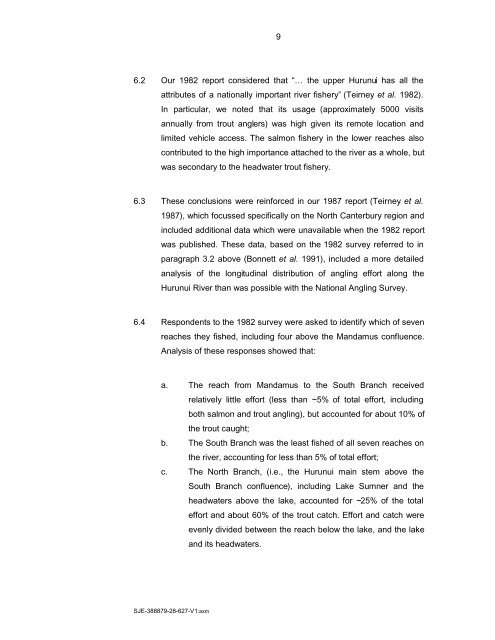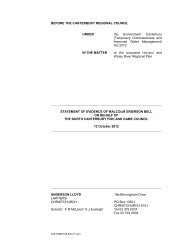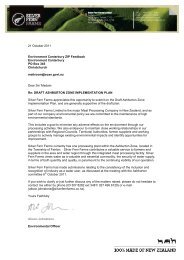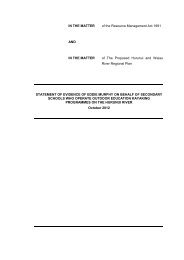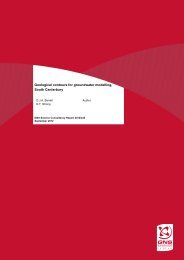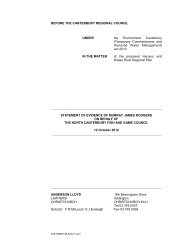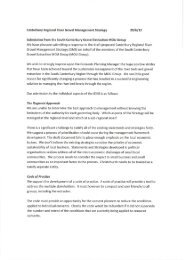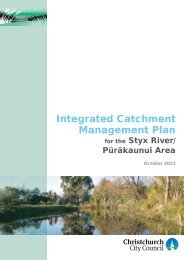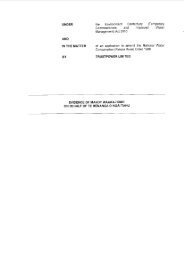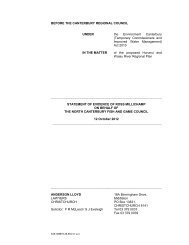Evidence of Martin Unwin - Environment Canterbury
Evidence of Martin Unwin - Environment Canterbury
Evidence of Martin Unwin - Environment Canterbury
Create successful ePaper yourself
Turn your PDF publications into a flip-book with our unique Google optimized e-Paper software.
96.2 Our 1982 report considered that “… the upper Hurunui has all theattributes <strong>of</strong> a nationally important river fishery” (Teirney et al. 1982).In particular, we noted that its usage (approximately 5000 visitsannually from trout anglers) was high given its remote location andlimited vehicle access. The salmon fishery in the lower reaches alsocontributed to the high importance attached to the river as a whole, butwas secondary to the headwater trout fishery.6.3 These conclusions were reinforced in our 1987 report (Teirney et al.1987), which focussed specifically on the North <strong>Canterbury</strong> region andincluded additional data which were unavailable when the 1982 reportwas published. These data, based on the 1982 survey referred to inparagraph 3.2 above (Bonnett et al. 1991), included a more detailedanalysis <strong>of</strong> the longitudinal distribution <strong>of</strong> angling effort along theHurunui River than was possible with the National Angling Survey.6.4 Respondents to the 1982 survey were asked to identify which <strong>of</strong> sevenreaches they fished, including four above the Mandamus confluence.Analysis <strong>of</strong> these responses showed that:a. The reach from Mandamus to the South Branch receivedrelatively little effort (less than ~5% <strong>of</strong> total effort, includingboth salmon and trout angling), but accounted for about 10% <strong>of</strong>the trout caught;b. The South Branch was the least fished <strong>of</strong> all seven reaches onthe river, accounting for less than 5% <strong>of</strong> total effort;c. The North Branch, (i.e., the Hurunui main stem above theSouth Branch confluence), including Lake Sumner and theheadwaters above the lake, accounted for ~25% <strong>of</strong> the totaleffort and about 60% <strong>of</strong> the trout catch. Effort and catch wereevenly divided between the reach below the lake, and the lakeand its headwaters.SJE-388879-28-627-V1:axm


